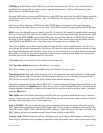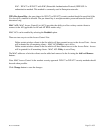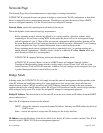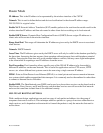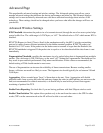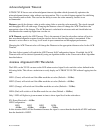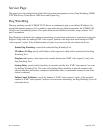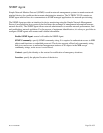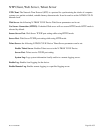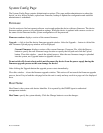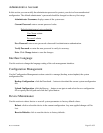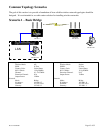Revision 04062009 Page 36 of 52
Acknowledgment Timeout
N-TRON 702-W has an auto-acknowledgment timeout algorithm which dynamically optimizes the
acknowledgment timeout value without user intervention. This is a critical feature required for stabilizing
long-distance outdoor links. The user has the ability to enter the value manually, but this is not
recommended.
Distance: specify the distance value in miles using slider or enter the value manually. The signal strength
and throughput falls off with range. Changing the distance value will change the ACK Timeout to the
appropriate value of the distance. The ACK timeout is calculated in microseconds and should take into
consideration the round trip flight time over the air.
ACK Timeout: specify the ACK Timeout. This is the amount of time the subscriber station will wait to
hear an acknowledgment response from the wireless device after the data packet is transmitted. If the
timeout is set too short or too long, it will result in poor connection and throughput performance.
Changing the ACK Timeout value will change the Distance to the appropriate distance value for the ACK
Timeout.
The Auto Adjust control will enable the ACK Timeout Self-Configuration feature. If enabled, the ACK
Timeout value will be derived dynamically using an algorithm similar to the Conservative Rate Algorithm
described above.
Antenna Alignment LED Thresholds
The LED's on the 702-W can turn on the LED when received signal levels reach the values defined in the
following fields. This allows a technician to easily deploy an N-TRON 702-W CPE without logging into the
unit.
LED 1 (Green) will switch on if the dBm reach the set value (Default = -30dBm).
LED 2 (Green) will switch on if the dBm reach the set value (Default = -60dBm).
LED 3 (Orange) will switch on if the dBm reach the set value (Default = -70dBm).
LED 4 (Red) will switch on if the dBm reach the set value (Default = -90dBm).
Only 1 LED will light at a given moment in time to show signal level in the order above.
EX: Power Received = -46dBm
LED Configuration:
LED1 LED2 LED3 LED4
-40dBm -50dBm -60dBm -70dBm
In this situation LED2 will be illuminated because the signal is worse then the threshold of LED1 and better
than the threshold of LED2.



